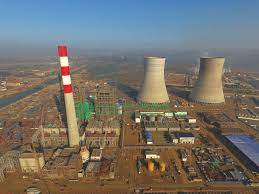Port Qasim Electric Power Company Limited (PQEPCL) is set to blend Thar Coal with imported one as the company’s proposal submitted with the Power Division has gotten a nod now.
This will be the beginning of the 1320 MW imported-coal fired project into the Thar Coal-fired powerhouse. Initially, the project will blend Thar Coal with a ratio of 10 percent on a pilot basis.
Private Power Infrastructure Board (PPIB), a report said had approached the Sindh Government as regards conversion to the Thar Coal of all IPPS in the country and asked for a bankable study. The Sindh government hired Fichtner GmbH KG & Co which conducted the study.
Based on data acquired from Port Qasim Electric Power Company the consultant submitted a preliminary feasibility report for the conversion of the imported coal-based power plant to Thar coal with the Power Division.
Simultaneously, the report said a feasibility study is also being monitored by the PPIB-appointed Panel of Experts (PoE) consisting of experts from the government and private sector.
Fichtner’s study findings say, most of the company’s plant systems have extra capacities that can handle a certain percentage of Thar Lignite with the exception of limiting equipment, ie, Fuel Gas Desulfurization (FGD), electrostatic precipitator, pulverizer, and primary air fans.
Fichtner claimed that the power plant can operate at approximately 50 percent capacity on Thar Coal alone without any major modifications and with a 20 percent blending ratio the power plant can operate at 85 percent of capacity. If 100 percent operation of the plant goes on Thar coal, the equipment capacities need to be enhanced.
Since the study performed by Fichtner is a desktop study it requires further confirmation through on-site testing.
The study was shared with Port Qasim Electric Power Company which stated that blending of 20 percent with a derated capacity of 85percent is not a suitable option; however, in their calculations, up to 12 percent blending can achieve 100 percent load of the plant.
The PQEPCL further agreed to on-site testing as suggested by Fichtner starting from 10 percent blending and the final blending ratio to be adjusted as per the actual test; however, in their view increase in blending with a decreased load is not a reasonable option at this stage due to power shortages in Pakistan.
The PQEPCL had indicated that Thar coal has a high sulfur content that causes erosion of boiler water wall pipe, heating surface, air pre-heater, and ID fan which consequently decreases boiler service life. However, it can be avoided with anti-corrosion and other modifications in the system.
Further, the blending of Thar coal will increase the burden of the desulfurization system including but not limited to an increase in auxiliary power consumption, O&M cost, reduce system service life and such costs shall be borne by GoP. In addition, site roads, coal storage, coal loading, and unloading systems also need to be upgraded. — ERMD
Port Qasim Electric Power Company starts converting to Thar Coal
on 09/01/2023








